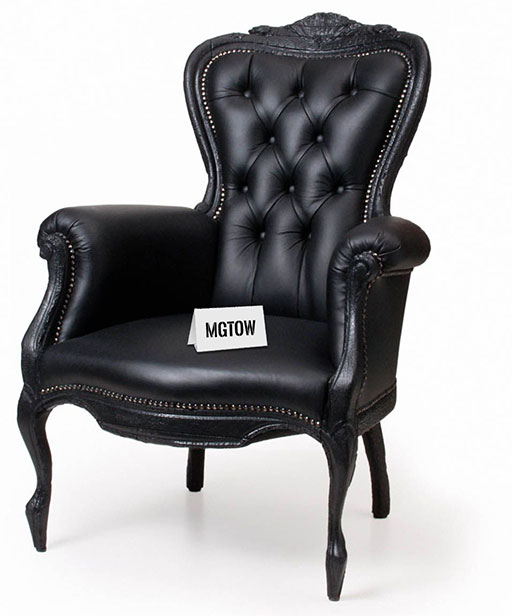This topic contains 0 replies, has 1 voice, and was last updated by ![]() Bestieboy666 3 years, 9 months ago.
Bestieboy666 3 years, 9 months ago.
- AuthorPosts
Crazy victims: Eighty percent of adolescents in psychiatric hospitals come from broken homes.
Source: J.B. Elshtain, “Family Matters…”, Christian Century, July 1993.Duh to dead: “The economic consequences of a [father’s] absence are often accompanied by psychological consequences, which include higher-than-average levels of youth suicide, low intellectual and education performance, and higher-than-average rates of mental illness, violence and drug use.”
Source: William Galston, Elaine Kamarck. Progressive Policy Institute. 1993Expelled: Nationally, 15.3 percent of children living with a never-married mother and 10.7 percent of children living with a divorced mother have been expelled or suspended from school, compared to only 4.4 percent of children living with both biological parents.
Source: Debra Dawson, “Family Structure…”, Journal of Marriage and Family, No. 53. 1991.Violent rejection: Kids who exhibited violent behavior at school were 11 times as likely not to live with their fathers and six times as likely to have parents who were not married. Boys from families with absent fathers are at higher risk for violent behavior than boys from intact families.
Source: J.L. Sheline (et al.), “Risk Factors…”, American Journal of Public Health, No. 84. 1994.That crowd: Children without fathers or with stepfathers were less likely to have friends who think it’s important to behave properly in school. They also exhibit more problems with behavior and in achieving goals.
Source: Nicholas Zill, C. W. Nord, “Running in Place,” Child Trends, Inc. 1994.Likeliest to succeed: Kids who live with both biological parents at age 14 are significantly more likely to graduate from high school than those kids who live with a single parent, a parent and step-parent, or neither parent.
Source: G.D. Sandefur (et al.), “The Effects of Parental Marital Status…”, Social Forces, September 1992.Worse to bad: Children in single-parent families tend to score lower on standardized tests and to receive lower grades in school. Children in single-parent families are nearly twice as likely to drop out of school as children from two-parent families.
Source: J.B. Stedman (et al.), “Dropping Out,” Congressional Research Service Report No 88-417. 1988.College odds: Children from disrupted families are 20 percent more unlikely to attend college than kids from intact, two-parent families.
Source: J. Wallerstein, Family Law Quarterly, 20. (Summer 1986)On their own: Kids living in single-parent homes or in step-families report lower educational expectations on the part of their parents, less parental monitoring of school work, and less overall social supervision than children from intact families.
Source: N.M. Astore and S. McLanahan, Americican Sociological Review, No. 56 (1991)Double-risk: Fatherless children — kids living in homes without a stepfather or without contact with their biological father — are twice as likely to drop out of school.
Source: U.S. Dept. of Health and Human Services, Survey on Child Health. (1993)Repeat, repeat: Nationally, 29.7 percent of children living with a never-married mother and 21.5 percent of children living with a divorced mother have repeated at least one grade in school, compared to 11.6 percent of children living with both biological parents.
Source: Debra Dawson, “Family Structure and Children’s Well-Being,” Journals of Marriage and Family, No. 53. (1991).Underpaid high achievers: Children from low-income, two-parent families outperform students from high-income, single-parent homes. Almost twice as many high achievers come from two-parent homes as one-parent homes.
Source: “One-Parent Families and Their Children;” Charles F. Kettering Foundation (1990).Dadless and dumb: At least one-third of children experiencing a parental separation “demonstrated a significant decline in academic performance” persisting at least three years.
Source: L.M.C. Bisnairs (et al.), American Journal of Orthopsychiatry, no. 60 (1990)Son of Solo: According to a recent study of young, non-custodial fathers who are behind on child support payments, less than half of these men were living with their own father at age 14.
Slip-sliding: Among black children between the ages of 6 to 9 years old, black children in mother-only households scored significantly lower on tests of intellectual ability, than black children living with two parents.
Source: Luster and McAdoo, Child Development 65. 1994.Dadless dropouts: After taking into account race, socio-economic status, sex, age and ability, high school students from single-parent households were 1.7 times more likely to drop out than were their corresponding counterparts living with both biological parents.
Source: Ralph McNeal, Sociology of Education 88. 1995.Takes two: Families in which both the child’s biological or adoptive parents are present in the household show significantly higher levels of parental involvement in the child’s school activities than do mother-only families or step-families.
Source: Zill and Nord, “Running in Place.” Child Trends. 1994Con garden: Forty-three percent of prison inmates grew up in a single-parent household — 39 percent with their mothers, 4 percent with their fathers — and an additional 14 percent lived in households without either biological parent. Another 14 percent had spent at last part of their childhood in a foster home, agency or other juvenile institution.
Source: US Bureau of Justice Statistics, Survey of State Prison Inmates. 1991Criminal moms, criminal kids: The children of single teenage mothers are more at risk for later criminal behavior. In the case of a teenage mother, the absence of a father also increases the risk of harshness from the mother.
Source: M. Mourash, L. Rucker, Crime and Delinquency 35. 1989.Rearing rapists: Seventy-two percent of adolescent murderers grew up without fathers. Sixty percent of America’s rapists grew up the same way.
Source: D. Cornell (et al.), Behavioral Sciences and the Law, 5. 1987. And N. Davidson, “Life Without Father,” Policy Review. 1990.Crime and poverty: The proportion of single-parent households in a community predicts its rate of violent crime and burglary, but the community’s poverty level does not.
Source: D.A. Smith and G.R. Jarjoura, “Social Structure and Criminal Victimization,” Journal of Research in Crime and Delinquency 25. 1988.Marriage matters: Only 13 percent of juvenile delinquents come from families in which the biological mother and father are married to each other. By contract, 33 percent have parents who are either divorced or separated and 44 percent have parents who were never married.
Source: Wisconsin Dept. of Health and Social Services, April 1994.No good time: Compared to boys from intact, two-parent families, teenage boys from disrupted families are not only more likely to be incarcerated for delinquent offenses, but also to manifest worse conduct while incarcerated.
Source: M Eileen Matlock et al., “Family Correlates of Social Skills…” Adolescence 29. 1994.Women are so bad, if they changed the law so I kept the house, I still wouldn't marry one. I'd rather be homeless.
- AuthorPosts
You must be logged in to reply to this topic.

921526
921524
919244
916783
915526
915524
915354
915129
914037
909862
908811
908810
908500
908465
908464
908300
907963
907895
907477
902002
901301
901106
901105
901104
901024
901017
900393
900392
900391
900390
899038
898980
896844
896798
896797
895983
895850
895848
893740
893036
891671
891670
891336
891017
890865
889894
889741
889058
888157
887960
887768
886321
886306
885519
884948
883951
881340
881339
880491
878671
878351
877678













